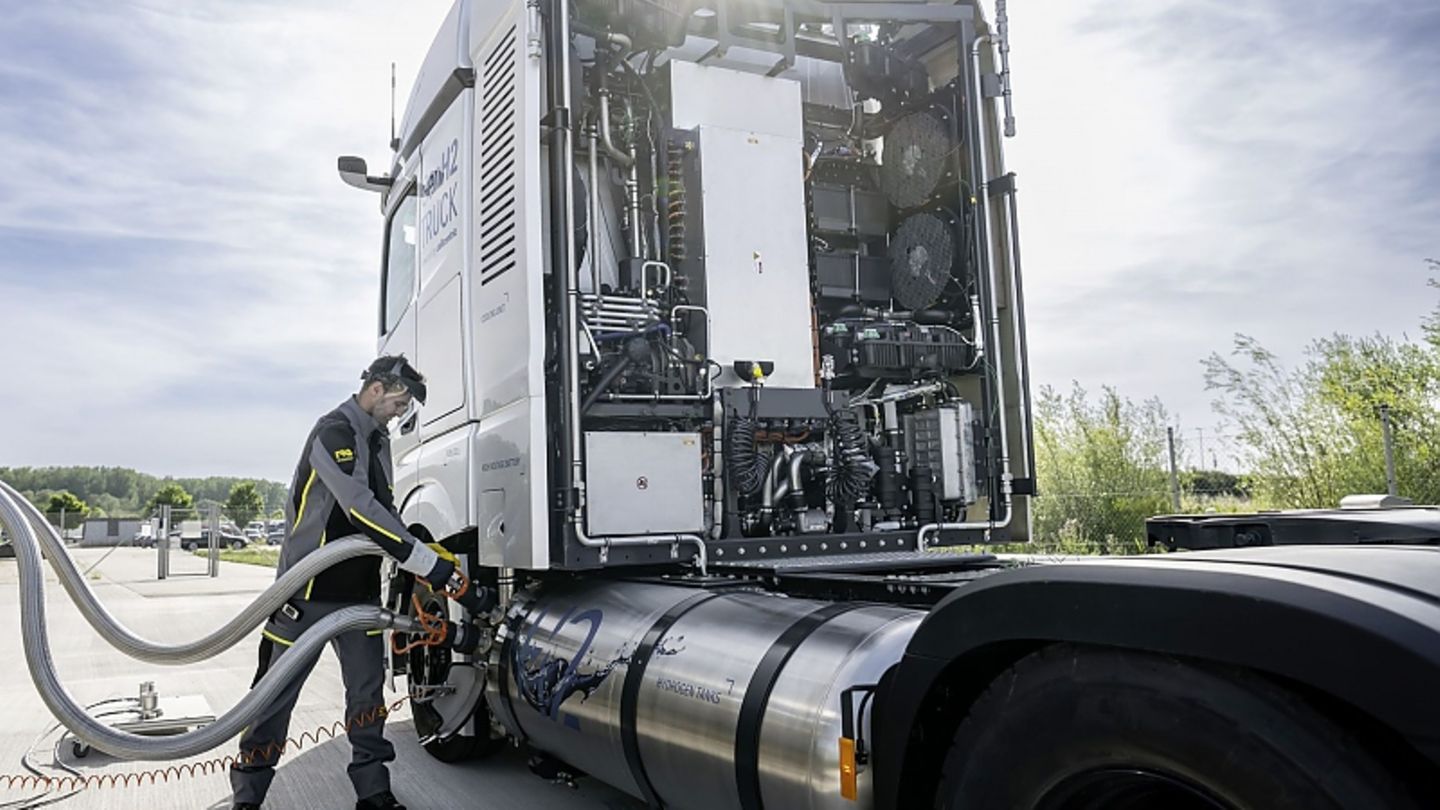Daimler Truck is not going all out on the battery-electric truck map, as hydrogen is making a notable comeback in conjunction with the fuel cell. But there, too, the Swabians are driving on two tracks. We took part in a heat endurance test on the Brenner autobahn.
There is a red alert on the Brenner motorway. A huge white cloud envelops a mighty 40-ton truck. danger is imminent. One might think. Some of the motorists probably see themselves stuck in a mega traffic jam, with blankets and goulash cannons. But appearances are deceptive. What appears to be a cloud of smoke is nothing more than water vapor that is produced when the fuel cell is working under load. “Drivers often ask me if something is broken on the truck,” says software developer Felix Kauffmann with a laugh.
It is not surprising that the fuel cell works so hard. The burner represents a major challenge for all trucks, whether diesel, battery-electric or fuel cell. Finally, the trucks climb up to a height of 1,560 meters, overcoming a difference in altitude of around 760 meters with gradients of up to 6.1 percent. Efficiency also suffers in the Alps. “With a full load, 1,000 meters of altitude can cost five kilograms of hydrogen,” calculates the technician. The Daimler truck troupe ventures onto the well-known north-south traffic artery for good reason: Climbing puts stress on the fuel cell. That’s why there are four cooling circuits in the Mercedes-Benz GenH2 truck: three with water and one with oil for the 70-kilowatt-hour battery (50 kWh net). The liquid flows around individual energy cells.
The fuel cell system of the GenH2 Truck delivers 2 x 150 kW, the batteries temporarily up to 400 kW. The battery uses different cells than the eActros, which can store and release energy quickly. This is necessary because the batteries have to step in, similar to a hybrid drive with a combustion engine, if the performance of the fuel cell has to be reduced due to heat build-up. Cooling is a big issue anyway. When the two large side fans start their work, a clearly perceptible hum penetrates into the driver’s cabin, accompanied by the high-frequency whirring of the turbocharger, which compresses the air for the fuel cell.
The drive has enough power for the 40-ton truck. Two electric axles each create 230 kW / 313 hp continuous output (330 kW / 449 hp maximum) and there are two fuel cells with 150 kW / 210 hp each. The maximum torque of the two electric motors is a maximum of 2,071 Newton meters per electric motor. “We can easily manage the 380 kW / 517 hp of a classic diesel truck,” grins Felix Kauffmann while the hydrogen truck climbs the pass. We notice how great the power of the fuel cell truck is when we are driving without a trailer and the wheels are spinning on the rain-soaked road.
Due to the higher energy content of around 70 kg/m3, Daimler Truck mainly relies on liquid hydrogen, but is also continuing to develop trucks with gaseous hydrogen in order to have the right solution ready for every market. The commercial vehicle division of Great Wall Motor in China does the same as the German commercial vehicle specialists. The Chinese car manufacturer is investing around one billion euros and is already testing 200 fuel cell trucks that are fueled with liquid hydrogen. There are good reasons for concentrating on liquid hydrogen: In addition to the significantly longer range, the chemical element is easier to transport in the liquid state, even if the temperature in the tanks has to be around minus 250 degrees. All in all, according to Daimler Truck, the energy balance is identical for gaseous and liquid hydrogen, since the gas has to be refilled and pressurized again and again. Two tanks, each with a content of 40 kilograms, take the truck around 1,000 kilometers.
There is still a lot of development work to be done before the hydrogen trucks with the star are on the road in the second half of the decade. The insulation of the tanks needs to be improved. Due to the temperature differences, too much liquid hydrogen is still heated to form vapor, which is then used up or has to be released so that the pressure in the containers does not become too great. When it comes to the infrastructure, liquid hydrogen is still looking pretty poor. The manufacturing processes must also be optimized before they are ready for series production.
The Daimler truck strategists also know that the liquid hydrogen has a poorer energy balance compared to the battery-electric variant due to the complex production process. But the comeback of the chemical element is based on the fact that it is suitable as an energy carrier and can be produced when electricity is plentiful. For Daimler Truck, the tailor-made transport solution is the top priority. Battery-electric if possible, but also hydrogen as a possible alternative for long-distance traffic. Due to the inherently greater range, the H2 trucks have a plus in spontaneous flexibility. But the decisive factor will be what the customers want. It will also be important for the vehicle to pay for itself in a maximum of five years so that the logistics company’s business model works.
Source: Stern
I’m a recent graduate of the University of Missouri with a degree in journalism. I started working as a news reporter for 24 Hours World about two years ago, and I’ve been writing articles ever since. My main focus is automotive news, but I’ve also written about politics, lifestyle, and entertainment.




